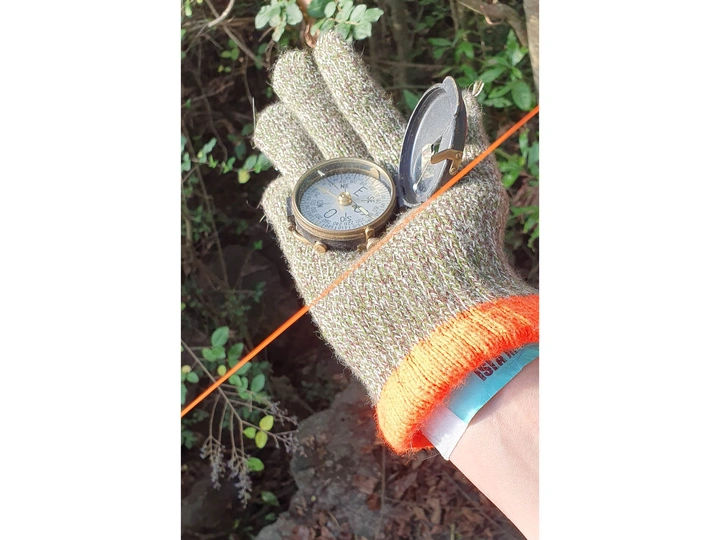Archiologists at the frontier

Guillermo García
Fermina Garrido
Jesús Huarte
Pedro Mandalari
Mara Sánchez-Llorens
Álvaro Sirvent
[ghs] Archiologists are linked through explorations in the territory, creative walks and critical maps based on journeys, as a study methodology and transformation of intermediate spaces such as border areas. May 2023, Martín García Island, Argentina-Uruguay: last collaborative meeting exploring the border.
Garrido Fermina: Associate professor of design and coordinator of Fundamentals of Architecture, Rey Juan Carlos University. She is an ETSAM architect (2002) and a UPM PhD (2016). Invited teacher at workshops and conferences at UPSAM, Universidad Europea, Pontificia Javeriana Bogotá, FADU Buenos Aires, ETSA Sevilla, and Biennale di Venezia. Member of the URJC PENT(h)A research project.
Huarte Jesús: architect 1995. [Territory of Architecture] architecture art research.
Urban and architectural Project design professor and director of “[u-seed] Semilla urbana”. 2022 PDE "Maps-path for a new landscape, between the pre-existing and the new project in architecture and education". FADU, Buenos Aires University. 2017 Linnaeus-Palme Scholarship SLU Malmö, Sweden. 2016 first prize in the Bolívar Project Contest, Imagine the Park. Second landscape, artistic interventions: 2023 Rivus Plata, mural, MARQ Buenos Aires. 2019 Desks, mural desks. FADU. 2016 Prisonnessence, floor painting Wolvenplein Utrecht The Netherlands.
Sánchez Llorens Mara: architect, PhD (UPM) and Associate professor of the Department of Graphic Ideation ETSAM Polytechnic University of Madrid. Doctoral thesis “Objects and collective actions of Lina Bo Bardi”; co-author of the book “Ray Eames and Lina Bo Bardi: the journey as a laboratory”. Curator of: "Lina Bo Bardi: tupí or not tupí. Brasil 1946-1992", Fundación March, 2018. Her lines of research are meta-maps of architecture, anthropology and ecology, migrations, creative emergence, society and habitat in projects such as: “Vanguard Muses” and “Culinary Rituals”.
Borders represent the spaces between cultures where significant challenges exist. The role of archiologists is to investigate these boundaries and their surrounding areas in order to draw intercultural links. They also question and undo previous actions in order to plan for the future based on the present.
Our goal is to organize walks, gather local materials, stories and maps, visually decode them, and create artistic and landscape interventions. Our ultimate objective is to have a border banket through an exchange table.
Imagine a gathering of professors, researchers, students, and locals from various universities and disciplines coming together to share knowledge on interconnected themes such as cultural landscapes, geographical contexts, associated rituals, collective memories, and multiple interpretations of space captured in our cartographies.
_____________________________________blog May 2023 [ghs]
“One morning in June we travelled from Buenos Aires to Tigre to take a ferry ready to act on the only dry border between Argentina and Uruguay. Martín García is a geological site. A place that reminds us of a time when the now flat territory used to be rocky. As a reflection of this geological change, since the 1970s there has been an increasingly unexpected transformation, a frontier line has been formed that is the space between a world of sedimentation and a rocky one.”
Humboldt's American Letters, as old as they are present in today's thought, call us to imagine a cosmos, an essay on this border. From botany to art. The last homo universalis described there is for us the first of a series of neo-homos that propose the existence of a universal order of beings based on planetary similarity, in harmony with nature and in the ordered structure between continents.